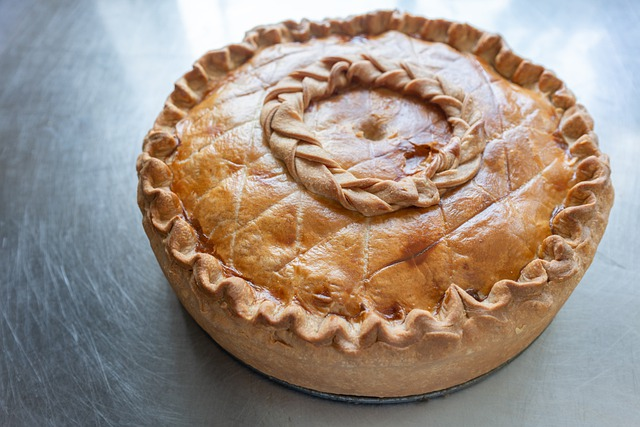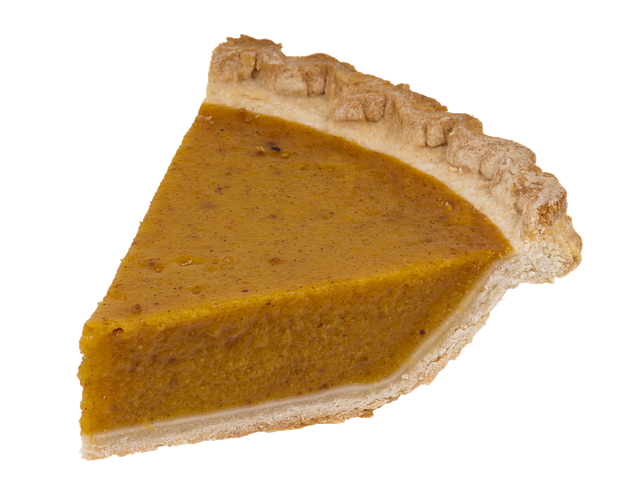Do not just stab it with a knife, it could cause some strife.
Now, it is time for the holidays and you are trying to impress your family as a new adult and took on the responsibility of making the pumpkin pie as the dessert. All’s well that ends well, they say. So, the dessert must be perfect or else you will never be trusted with baking ever again. This makes pumpkin pies one of the most important elements of the holiday meal.
A pumpkin pie or custard pies in general are pretty tricky to get right. As the name suggests, the custard is a pretty integral part of a custard pie and it needs to be just right. The custard of pumpkin pies needs to be loaded with flavour and a pumpkin filling that should taste as rich as you could possibly get it to.
So, how do you bake the perfect pumpkin pie? How to tell when pumpkin pie is done too.? How to check this without making it look like you dug into it? Fret not, I will tell you how.
A pumpkin pie includes two elements and a third optional one. Sounds easy? Well, it is easy if you get them right. You will need
- A buttery pie crust
- A rich custard filling loaded with spices and flavour
1. The Perfect Crust

The crust is the first element of the pie that people look at, so, it is imperative to get it just right. It needs to look perfectly toasty and buttery and should have just the right amount of crunch and crumbliness to it. You can always hide your mistakes with some fresh whipped cream but you would feel a lot better and accomplished if you get it just right.
In order to achieve the perfect crust, you need to know your colours. The crust needs to be Golden Brown. Not brown, not dark brown, not light brown. It needs to be golden brown. Do not take it out of the oven until the colour looks as even as possible. If you see white spots, it isn’t done. Looks can also be deceiving. Just because it looks like the pie is done now, it does not mean that it is cooked through. Try to get it as evenly golden brown as possible.
Use the recipe instructions you’re following as a guide to get it right. One of the hardest parts about baking the crust is keeping it from getting soggy. You can use the following methods to prevent it
1.1. The Blind Bake
One of the best ways to prevent your crust from getting soggy is to blind-bake it. This means you need to cover the crust with foil while baking or pre-baking it in order to prevent any bubbles from forming. It also helps the crust to cook perfectly and set properly before adding the custard or the pumpkin pie filling.
1.2. Brush with Egg
Another way you can prevent it from getting soggy is by creating a layer between the filling and the crust. You can do this by brushing it with egg and baking it before adding the custard filling or the pumpkin pie filling. This will seal the crust and prevent any of the custard from settling on the crust and making it soggy.
1.3. Bake on a Hot Baking Sheet
When you’re baking the crust, the heat melts away little pockets of fat in the center of the crust and this produces steam, this prevents it from bubbling up and the steam could prevent it from setting properly. According to the FDA, the oven should be heated to 450F and brought down to 350F while baking.
To prevent this from happening, it is best to place a baking sheet in the oven while preheating it and once it heats up, place the baking tray directly onto the hot baking sheet. This gives it a boost of heat and helps the crust bake more evenly and set properly before adding the pie filling.
2. The Perfect Custard Filling

Most custards are pretty tricky to get right. So, to get the perfect filling, you need to make sure that it isn’t undercooked and runny, nor should it be overcooked and crumbly. You can always rely on the following tests.
2.1. The Knife Test
The standard knife or toothpick test is the easiest, most efficient, and most accurate way of detecting whether cooking a pie is a success or not. Gently slide a knife or a toothpick into the centre of the pie and pull it out. If the knife/toothpick comes out clean, it is a good indicator that the pie is done.
The only disadvantage of the knife test is the gap that the knife leaves in the filling. Is this important? No, it is not. A crack in your pie is a true indicator that you were focused on the quality of your dessert and not the looks. It is also proof that you made your own pie and did not take the easy route out and serve a store-bought one. If you are extremely concerned about the crack, you’ll be pleased to know that it is not something that a dollop of fresh whipped cream cannot cover-up. This is not a free pass to stab it however you please, though.
2.2. Use a Timer
Yes, it is always tempting to use our senses and go by the way we feel while cooking. This urge might make you want to eyeball everything. We all know that looks can be deceiving. Should you try to make it look good? Absolutely. But should you use that as the only indicator of whether your dish is good or not? No. Your senses might fool you sometimes, like how you ignored the red flags in your ex. It makes great practice using each sense of the kitchen, but sometimes it could make you less efficient.
Timers help to remind us to keep things going during the holidays, but don’t forget the pie. Professional cooks usually have timers, as they allow the use of multi-tasking. Look through the recipe that you are following and see how long they ask you to bake the pumpkin pie. This will help you get the perfect pumpkin pie. This will also help you avoid the crack in the middle of your pie, all while helping you figure out whether your pumpkin pie is done or not. According to the FDA, bake it for 45 minutes or until the knife comes out clean in the knife test.
2.3. The Jiggle Test
If you do not trust the timer and if you are not willing to compromise on the presentation, then you can always rely on the jiggle test. Yes, it sounds silly, but it is also very reliable, when you give it a gentle nudge, it should be firm at the corners and slightly jiggly in the centre.
Once you are done baking the pumpkin pie for as long as the recipe requires, gently shake the pie. It should wobble like jello. It should by no means be watery or runny. It should have a little jiggle like a jelly. Once you reach this stage, take it out of the oven immediately. Leave it out until it cools completely. This will make the custard cook to just the right consistency.
2.4. The Instant-Read Thermometer Test
Another way to get it right is by using a thermometer that is made just to measure the internal temperatures if food. This will leave a very small point-like hole in your crust but it’ll be barely noticeable since it is just one dimensional.
The thermometer will measure the finished product in seconds when you insert it in the filling. According to the FDA, the oven should be preheated to 450F and turned down to 350F while baking. This is possibly the most accurate and easiest way to test whether it is fully cooked without cutting the slightly domed top layer.
3. In Summary
So, yes, these are some tips to get the perfect pumpkin pie for yourself and your family, whether it be for the holidays or for any random day. You can check this out to learn how to store your pie safely.
I pray these tips were helpful. Have an amazing day.
Last Updated on by Jonell Samara








/cdn.vox-cdn.com/uploads/chorus_asset/file/23587766/acastro_220524_STK428_0002.jpg)






![22nd Nov: Daddy's Home (2015), 1hr 37m [PG-13] – Streaming Again (6.1/10)](https://occ-0-533-1009.1.nflxso.net/dnm/api/v6/Qs00mKCpRvrkl3HZAN5KwEL1kpE/AAAABU7U3F5ORsktkcKnsXFyD86wus7Cmr7iGjw4ak1lDuf88nJEsAZYYFANOcPzvIfdY6ZWDDdu-Lr19yxhLdfy4nbY9jut_63fTBwb.jpg?r=7b9)

